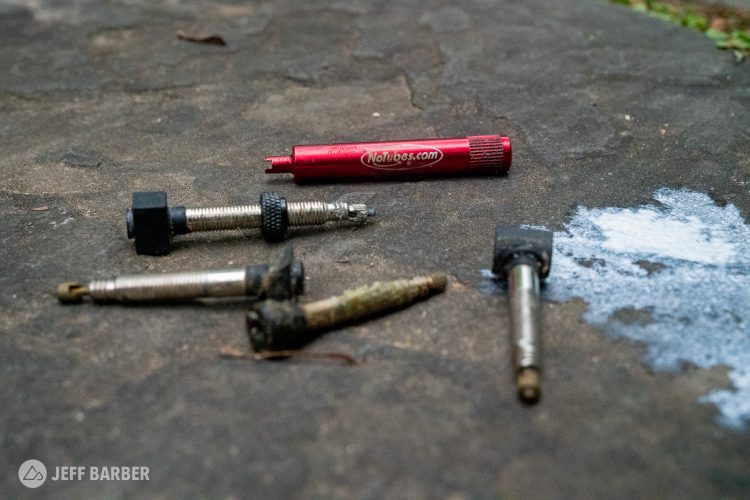
Aaron Chamberlain is the Bicycle Sales and Marketing Manager at Maxxis, one of the largest bicycle tire manufacturers in the world known for producing high quality products.
Outline
- Where are we at with bike tire widths? Clearly fat and plus tire adoption have peaked so are things looking pretty stable these days in terms of widths?
- What are the considerations when choosing the right tire width, especially when there are so many choices? Will a tenth of an inch in width make a noticeable difference to anyone?
- Do you think bike brands do a good job speccing tires on bikes? Do price and weight get prioritized over performance in some cases?
- Which MTB tire features are a good fit for gravel?
- Is it more difficult to design a gravel tire that’s both lightweight and fast and also durable?
- Do any of the innovations in gravel tires have the potential to filter to MTB?
- With access to pretty much any and every MTB tire you could want, how often do you change your tires: Seasonally? Every ride? Never?
- One of the key specs when looking at tire casings is a number called TPI, threads per inch. What does that number tell us?
- How does TPI work when there are multiple plies or casing layers involved?
- What’s the best way to dispose of worn out bike tires?
- What are some of the trends you’re seeing with pro gravity riders? Are there changes in the key things they’re looking for?
Key takeaways
Choosing a mountain bike tire can be overwhelming given the number of options available. An all-conditions tire is a good place to start, and for many riders it’s the best choice. Chamberlain says, “When you’re very used to your setup, and you’re very comfortable with it, you can adjust your pressures up and down as needed for conditions. I would definitely encourage people to experiment with their tire pressure. If it’s wet, drop a couple psi. If it’s dry and hardpack, add a couple psi. That can make a really big difference.”
He goes on to say that most riders tend to run too much tire pressure, though if you’re getting a lot of flats you could be running pressure that is too low. How you ride can make a difference too. Chamberlain recommends buying a good pressure gauge and using it regularly so you understand how pressure affects ride feel and performance.
“Don’t be afraid to mix and match tires. Front flats are typically a lot less common than rear flats. So I think most riders can get away with running a lighter casing tire on the front, and then running a more durable tire on the rear.”
On tire widths, Chamberlain says, “It’s not just the width. Whenever you’re making a tire wider, you’re also going to increase the sidewall height, so you’re increasing the overall volume. So the difference between 2.4, and 2.6, while on paper, is just point two inches — less than a quarter of an inch in width — doesn’t seem like that much, in actuality, the the volume is a lot bigger.” By the law of cubes, tire volume increases many times the width.
Tire volume is just as important when it comes to gravel tires, perhaps even more so than the tread pattern. “Tire volume will go a long way [on gravel tires]. You could you could get a slick, essentially a tire with no tread on it, a 40 millimeter wide tire. And that may be all you need. The tire volume and then running the correct pressure [is important].”
Chamberlain explains that a tire’s TPI rating tells us how many threads per inch there are in a one square inch section of a tire casing. A higher TPI number usually means a lighter, more supple casing since the threads are smaller than on a low TPI casing. Thicker threads are heavier but also more durable. Things get confusing on tire casings with more than one ply, and bike tire manufacturers do not standardize how they communicate the TPI numbers. Some call two, 60 TPI plies a 120 TPI casing, while others say it’s a 60 TPI casing with two plies. “It’s like trying to take a $20 bill, and you fold it in half, and then you say 40 bucks,” Chamberlain says.
Looking at the weight of a tire and its intention (XC vs. gravity) is the best indication of the type of casing the tire uses.
Chamberlain says sponsored gravity riders are riding prototype tires with a new lightweight, puncture protection layer called ZK that is “lighter, more flexible, and stronger than previous materials.” It’s also expensive.
See more at maxxis.com and on Instagram @maxxisbike.
Never Miss an Episode
- Listen on Spotify
- Listen on Apple Podcasts
- Listen on Google Podcasts
- Listen on Stitcher
- Listen on Overcast
- Get the RSS Feed
- View all Podcast Episodes



















